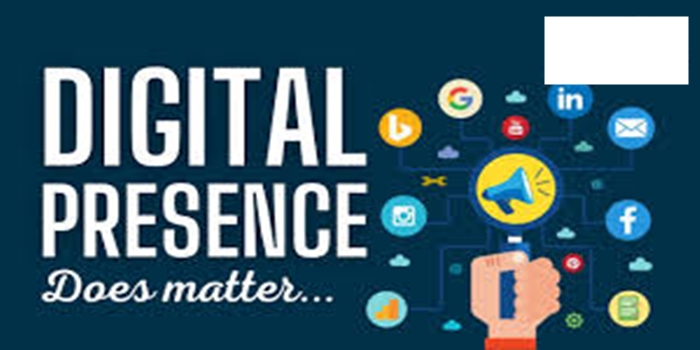In this article, we discussed the meaning of digital presence, the features, the importance, and we also stated the different types.
Definition
Digital presence refers to how an entity (like a business or individual) is perceived and visible online. It encompasses all the digital interactions and content that contribute to an entity’s online reputation and reach. This includes websites, social media profiles, online reviews, and other digital platforms.
The Features of Digital Presence:
Visibility:
This refers to how easily people can find you online, especially when searching for your type of business or product.
Content:
This includes your website content, blog posts, social media updates, and other online materials that showcase your brand and value proposition.
Engagement:
This refers to how actively you interact with your online audience, responding to comments, sharing valuable information, and building relationships.
Reputation:
How people perceive your brand online, influenced by reviews, social media comments, and other online mentions.
Brand Identity:
This encompasses your logo, color palette, messaging, and overall online image that reflects your brand personality.
Digital Marketing:
Utilizing various digital marketing strategies like SEO, social media marketing, email marketing, and paid advertising to reach your target audience.
The Importance Digital Presence:
Increased Visibility and Reach:
A strong digital presence allows businesses to be found by a larger audience through search engines, social media, and other online platforms.
Enhanced Credibility and Trust:
A professional website, active social media presence, and positive online reviews can build trust and credibility with potential customers.
Accessibility and Convenience:
Customers can easily access information about products, services, and contact details through a well-designed website or social media pages.
Cost-Effectiveness and Efficiency:
Online marketing and advertising can be more cost-effective than traditional methods, and online platforms can streamline operations and customer service.
Targeted Advertising and Engagement:
Businesses can use online platforms to target specific demographics and engage with customers through personalized content and advertising campaigns.
Data-Driven Insights and Optimization:
Businesses can track website traffic, social media engagement, and other metrics to gain valuable insights and optimize their digital strategies.
For Individuals:
Professional Networking:
Online platforms like LinkedIn can help individuals connect with professionals in their field, build relationships, and find new opportunities.
Career Advancement:
A professional online profile can showcase skills, experience, and achievements, making it easier to find new jobs or freelance opportunities.
Personal Branding:
Individuals can use online platforms to build their personal brand, establish expertise, and connect with like-minded individuals.
Digital Identity and Security:
A strong digital identity can help individuals protect their online privacy and reputation, and secure access to online services.
Increased Visibility and Accessibility:
Individuals can use online platforms to share their work, connect with others, and build a network of support.
The Types of Digital Presence
- Web Presence:
Website:
A central hub for your business, showcasing your products, services, and contact information.
Blog:
A space to share valuable content, build authority, and engage with your audience.
Email:
A direct line of communication for newsletters, promotions, and customer support.
- Social Media Presence:
Social Media Profiles: Platforms like Facebook, Instagram, Twitter, and LinkedIn allow you to interact with your audience, build a community, and share updates.
Social Media Campaigns: Targeted marketing efforts on social media to reach specific demographics and build brand awareness.
Influencer Marketing: Collaborating with influencers to promote your brand to their followers.
- Search Engine Presence (SEO):
Search Engine Listings:
Ensuring your website and other online resources are easily found in search results.
Online Reviews:
Positive reviews on platforms like Google Maps and Yelp can boost your credibility and attract customers.
- Content Marketing:
Content: Creating and distributing valuable, relevant, and consistent content to attract and engage your target audience.
Various Content Formats: This can include blog posts, social media posts, videos, ebooks, and more.
- Other Digital Marketing Channels:
Pay-per-click (PPC) Advertising:
Paying for ads that appear on search engine results or other websites.
Email Marketing:
Sending targeted emails to your audience for promotions, updates, and customer support.
Native Advertising:
Creating ads that blend seamlessly with the look and feel of the platform they appear on.
Affiliate Marketing:
Partnering with other websites or individuals to promote your products or services in exchange for a commission.
Conclusion
Digital presence refers to how an entity (like a business or individual) is perceived and visible online. It encompasses all the digital interactions and content that contribute to an entity’s online reputation and reach. This includes websites, social media profiles, online reviews, and other digital platforms.


